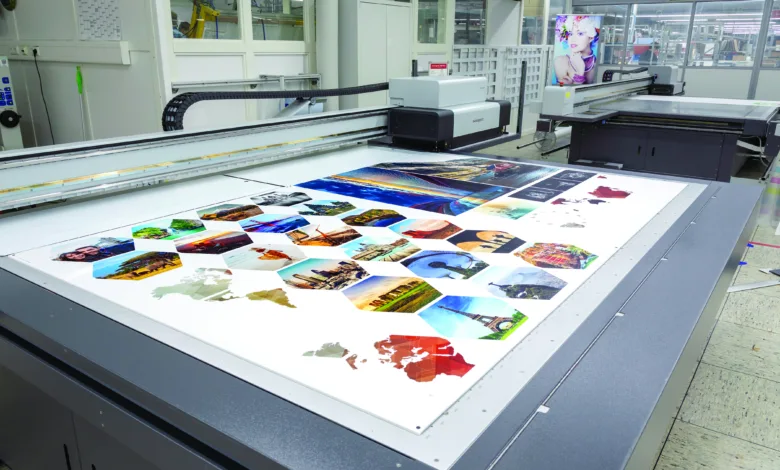
Whether you consider yourself a beginner with “bad” credit or already run a well-established graphics business, you will likely reach a point where financing new equipment comes into the equation. From your first contact with a lender to the final payment, the process of financing new equipment may seem daunting.
You may wonder, is your shop ready to take on an expansion? With the proper preparation and understanding what to be aware of, financing can help get your business up and expanding.
First things first
For some shop owners, a new piece of equipment can mean offering a new service that is in demand, which will boost sales, says Mike McCaffrey, MMP Capital. For others, it can mean an upgrade in technology to increase efficiency.
Before a shop should invest in new or additional equipment, they need to consider the profitability, McCaffrey explains. Like any business decision, what will help increase revenue?
John Sullivant, Adia, says to calculate the Return on Investment (ROI). This helps determine if you can afford the costs of the investment. “What possibility of new customers could it bring to the table and what expansions does it offer current customers?” says Sullivant. He recommends figuring out the appreciation of the equipment as well.
One of the most important things to consider is how long it will take to start realizing positive cash flow after making the investment, adds Greg Bourdon, CIT. “If the purchase is speculative in nature, then it’s important to consider what happens if that additional work or contracts that you’re banking on do not come in,” Bourdon says. “Do you have enough free cash flow from your existing operations to cover the new payment while you look for other work to make use of the equipment?”
Other important questions to ask:
- What are the costs and needs associated with the equipment?
- Will you need additional staff?
- Will you need more warehouse space for raw materials or finished goods?
Thinking through all possible best- and worst-case scenarios and additional needs/costs that come with investing in large graphic equipment will help ensure that a shop is in the right place to take on an expansion, Bourdon says.
“If you think you can do this process for 14-18 hours a day and be comfortability busy, but you’re only able to do it 8 hours a day because of your current production restrictions, by all means add more or better equipment,” Sullivant adds.
- Extra tip from Sullivant: Whenever you’re adding equipment, always consult with a Certified Public Accountant (CPA).
Steps to secure funding
The process to secure funding can vary. As Sullivant explains, there are many variables within the process, depending on who the client is. “As a lender, we ask questions to find out what’s the best possible scenario for this person’s approval,” he says.
According to Bourdon, the process to secure funding typically follows these steps:
- During your first contact with a lender, they should ask you about the equipment you are looking to buy, including how much it costs and what vendor is providing it.
- The lender will submit your application for approval. Depending on the dollar amount requested, you may need to supply additional information beyond the application, such as bank statements, tax returns, or financial statements.
- If your application is approved, you will be notified, and loan terms will be provided. The lender should provide you with a handful of different options to find something that best fits your budget.
- You will sign your paperwork, which is often done electronically.
- The lender should then coordinate payment of the equipment invoice with your vendor. Your lender will get the payment instructions and request any final invoices for your purchase.
- Your vendor will ship and deliver the equipment once the lender has provided a purchase order and confirmation that all the documents needed are complete.
- The lender pays the vendor for your final invoice, which you agreed to for the purchase.
- Your regular payments begin, based on whatever terms you agreed upon. In most cases, they will be monthly payments.
- You continue to make regular payments throughout the term of your loan.
- You can expect to hear from your lender occasionally as they check in on your business needs for more equipment. Once you already have done business with that lender it should be quite easy for them to support you on any future business needs.
Ultimately, the funding process is based on the comfort level and eagerness of the customer. “Customers that know what they want and are 100% ready, can have financing in one day,” McCaffrey states. Those that need more help can work with their lender every step of the way.
Best practices for the financing process
Ensure that all your business paperwork is in order. Double check that your Secretary of State filing is active, and your annual reports have been filed. All your financial statements, including your current balance sheet and income statements, should be prepared and available as well. You may not be asked to provide them, but it will avoid any delays and it’s a good reminder to check off all those housekeeping items. –Greg Bourdon, CIT
Lender versus bank loan
What’s the difference between obtaining a loan with a regular bank or with a lender?
An experienced equipment finance lender can help you navigate the financing process specific to your business needs, Bourdon says. They also can check your vendors to ensure you’re working with the right people, and because they have industry-specific knowledge and expertise, they can provide you with a higher chance of approval and competitive terms.
Additionally, “we understand your business model, what the equipment does, how it is going to generate revenue and positively impact your business,” says McCaffrey. “For example, we know when a piece of equipment will cut down on ink cost or labor cost and can write that as a reduced operating expense into your application.” Whereas local banks may not have specific industry experience to understand the financing implications. McCaffrey explains that could lead to a slower process and the banks requiring more financial information.
A local bank also may not be accustomed to working with the vendor to gather invoices, coordinate shipments, and issue purchase orders to your suppliers. Bourdon comments, “if you were to walk into your local bank to purchase a new flatbed or roll-to-roll printer, there’s a good chance it will be the first time they have financed one.”
Sullivant agrees that while working with an industry-specific lender is easy and saves time, he still recommends looking at a regular bank and comparing with the lender to find the best option for your business.
Terms and conditions
With the terms and conditions, you should know whether your loan rate is fixed or adjustable, Bourdon says. “In most cases today, the rate will be fixed for the entirety of the term on a lease or an equipment finance loan,” Bourdon explains. “However, that may not be the case if you are using a line of credit or another instrument to pay for your hardware. Variable rates make it more difficult to budget, so knowing this information upfront can help you to better plan.”
Sullivant highlights the importance of knowing your front-end costs. “How can you pay off? Can you pay off early?” asks Sullivant. “What you could also ask for is an amortization schedule, so you know from the beginning where you’ll stand after month 36, for example.”
McCaffrey advises customers to make sure they understand the contract. “Do not be afraid to ask questions, as some lenders are not clear with things like early buyout options and balloon payments,” he says. Pay attention to the details and understand what you’re signing.
A side note about personal guarantee: If you are going to personally guarantee your business financing, you should ask the lender what that means. In most cases, a lender may check your credit, and ask you to guarantee the loan, but they may or may not report anything to personal credit. You should look for a business lender that reports to your business credit, even if you do offer a personal guarantee.
-Gregory Bourdon, CIT
Avoiding pitfalls
There are some leasing people out there who don’t have good ethics or morals, Sullivant points out. “If you’re not comfortable with a deal, don’t avoid your gut feeling.”
Bourdon says you should avoid overbuying or underbuying for your current needs. The purchase should be considered an investment in your business that will be utilized for a period of time, for a specific use case, he explains. That time period should match as closely as possible to the term of your financing.
“If you only expect a piece of equipment to last you three years based on your frequency of use then don’t finance for longer than that, even if the lower monthly payment looks attractive,” Bourdon says. “Having to make payments on equipment that is beyond its useful life isn’t a great position to be in.”
When all is said and done, McCaffrey believes that financing shouldn’t drive the purchase; the need and potential benefit of the equipment should drive the purchase.
Advice for financing for low-credit scores and first-time buyers
When financing, everyone is shopping for the best deal. In the financing world, the best deal is reserved for the lowest risk customers, Mike McCaffrey, MMP, explains. There is often a mistaken belief that new businesses, or those with below average credit, will be unable to secure funding. McCaffrey points out there is no need to wait until your business is “well-established.”
First-time buyers or those with low credit scores do have a couple options, according to Greg Bourdon, CIT. Startup financing is typically available but has higher rates. Bourdon says that in most cases, this should still work for a buyer’s monthly payment budget. If the equipment can pay for itself based on the monthly payment, it could be a sound investment regardless of the rate.
Bourdon explains another option is to focus on terms. Select either the shortest term you are comfortable with or the lowest payment – if the term doesn’t exceed the useful life of the equipment. The term should provide you with a payment that you are confident you can make on time, every time, for the life of the loan, Bourdon includes.
Even with these options, it’s important for buyers to take the necessary steps to get their credit in order. Pay off or bring current anything that is past due, keep credit card ratios in check and keep an eye on personal credit. There are lots of free credit reporting tools available on the market. Knowing your credit makeup before you apply will provide you with the best chances to state your case and get the best deal for you and your business, Bourdon concludes.
- Expert tip from Sullivant: Less than 3% of people do early payoffs. With commercial financing, you don’t ever pay things off early – they’re tax write-offs. Your money is worth more in your pocket today than it is someone else’s. Take your money and put it to work for you. Put your cash back into your business, or into stock. Debt is credit.



